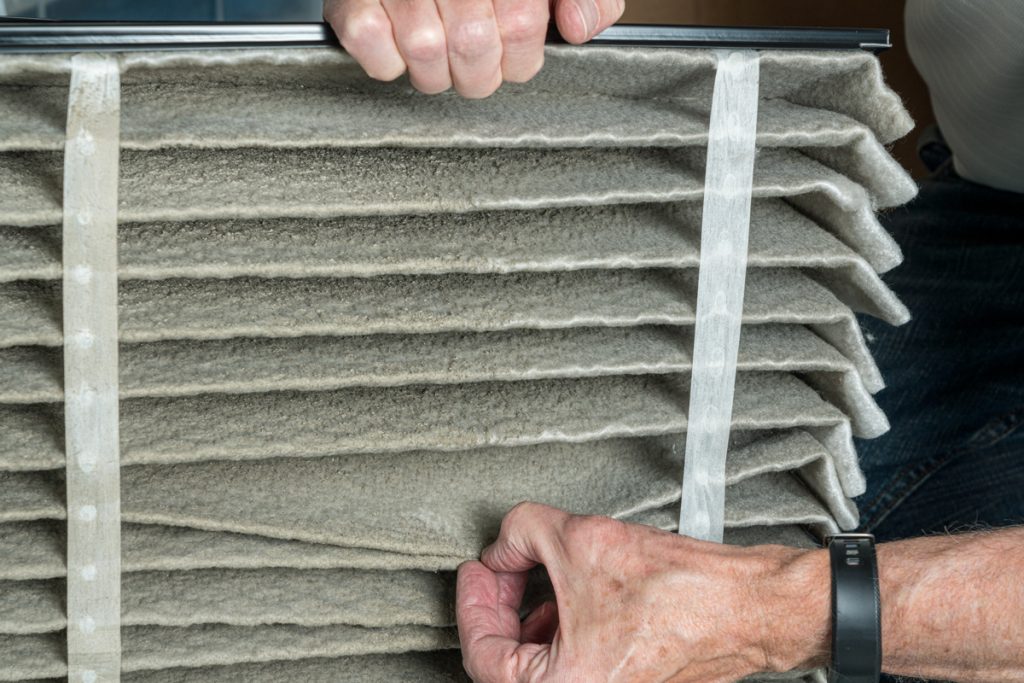Forced-air systems, the heat source for a majority of homes, are commonly turned down at night or during the day if the home is empty. Why heat the air for no one to enjoy, after all? As radiant floor heating systems become more popular, those making the switch may wonder - should I be turning down my radiant heat at night or not?
While you'll have to play around with your thermostat a bit to find out what exactly works in your home, the short answer is yes. Turning down (but not off!) your radiant heat at night can save energy and money when done correctly.
Keep reading to find out just how low you can go, what factors to consider, and other useful information about radiant heat.

Contents
How To Set Radiant Heat For Nighttime
The big debate over whether or not to turn down radiant heat stems largely from the slow pick-up time for reheating. Radiant heat works because the heat is carried through electric wires or tubes of hot water, nestled under the floor. The heat then rises through the floor and into the room to provide warmth.

This means that when you turn off the heat, you are not immediately feeling a drop in temperature like you do from a forced-air system. Whatever lies under your floor that is actually heating up by the transfer of warmth through a radiant heat system takes hours (or more) to cool, and to warm. The actual length of time depends on factors such as the materials and insulation.
This leads some people to believe that turning off heat at night is a waste of time - by the time everything is cooled off, it's time to start heating again (radiant systems need to be turned up well in advance of actual wake-up times, as it can take an hour or two before optimal temperatures are reached).
The truth is, you should turn down (but not off) the heat. By continuing to keep some heat running under your floors, the "slab" under the house conducting the heat never truly cools off-but you can benefit from less wasted energy.
Exactly how far you turn it down will be up to some experimentation, as every home is different. One recommendation calls for using a programmable thermostat that sets night-time air temperature to drop somewhere in the 60-degree range, and to start re-heating to normal daytime temperatures a couple of hours before waking.
What Are the Pros and Cons of Radiant Heating?
Pros
Consistent Heating
Radiant heating is a more uniform heat. Forced air systems blow hot air out of vents, which means that the spots right by the vents stay the warmest, while other areas of the room may still be chilly if the hot air isn't reaching them. Since radiant floor heating heats the entire floor at one temperature, the whole room has a consistent warmth.
Quiet Operation
Radiant floor systems are very quiet. You don't have to listen to a loud furnace kick on and off all the time.
Energy Efficient
Some of the heat from forced air systems ends up leaking out of the ductwork, whereas all of the heat produced by a radiant floor system goes directly toward heating. This makes radiant flooring an energy-efficient choice. Radiant heat saves about 15% on the average heating bill.
Better Air Quality
Radiant floors don't contribute to allergy problems. Forced air systems can be triggering for those with allergies. All that hot air blowing through the ducts and vents also blows around a lot of dust and other allergens.

Cons
Requires Boiler
A boiler is required for radiant floor heating. This can be an expensive setback to having radiant heat installed.
Can Be Difficult/Time Consuming To Install
It can be difficult to retrofit an already built home with radiant floor heating. Many people aren't eager to pull up their flooring for installation. Due to this difficulty, some companies have begun meeting the demand for radiant heat that doesn't require a flooring overhaul. Some systems can be installed through walls or the ceiling.
Expensive
Even for those who don't mind the extra work, it can be expensive. A good estimate for the cost is between $10 and $20 per square foot to have radiant floor heating installed.
Takes Up Space
To fit in the radiant system, you'll lose a little room. Floor height is increased, anywhere from 1/2 an inch to 1 and 1/2 inches (how much insulation you have to add to keep heat in will play a role in how these numbers vary). If you have low ceilings, this may be a problem.
How Reliable Is Radiant Floor Heating?
Radiant floor heating is considered a very reliable method of home heating. Once installed, problems rarely occur. There's virtually no need for service calls, and many systems come with long warranties. A radiant system can last upwards of 35 years, with proper care.
It's also reliable in the day-to-day sense. Because heat is distributed evenly through the floor, "hot spots" by the radiators or vents and "cold spots" in other areas of the room are eliminated. The room will feel the same comfortable, consistent temperature all day long.
If you want to know more about the longevity of radiant floor heating, check out our article How Long Does Radiant Floor Heating Last?
What Is A Good Temperature Setting For A Radiant Heat Floor?
If you have a thermostat that is set to read the floor temperature, most people feel comfortable at 75 degrees. This translates, roughly, into about 70 degrees room temperature. As a general rule, you can assume floor temperature is about 5 degrees warmer than room temperature (if you want the room to be 72 degrees, set the floor for 77 degrees).
It's important to note that you can overheat the floors and cause damage. For this reason, you should avoid going above 85 degrees. Finished wood floors are particularly susceptible to damage.
If your thermostat is set to read room temperature, many people find somewhere around 68 degrees comfortable.
Do You Need A Special Thermostat For Radiant Heat?
You will want a thermostat made for radiant floor heating, preferably one that reads the floor temperature. While sometimes forced-air thermostats can also be used for radiant heating, it's not really a good idea. A forced-air thermostat works by turning on when the air temperature drops below a certain point and turning off when it goes above a certain point.
This doesn't translate well for radiant floor heating. By reading the air temperature, which heats slower than the floor, it means that the floor is getting too hot before the air temperature reaches that "stopping" number. Then you're stuck waiting for the air temperature to drop (which happens after the floor has begun to cool). It can be a very uncomfortable cycle.
Thermostats made for radiant floor heating will have better results and waste less energy. They offer more accuracy and precision at maintaining your desired temperature, as they are made to work ideally with the heating system.
Can Nest Thermostat Control Radiant Heat?
The Nest Thermostat is compatible with radiant heat systems once connected, through an app called True Radiant. According to Google Nest, True Radiant is automatically enabled once it detects your radiant heat system. You can change the settings with your Nest thermostat or the Nest App.
Click here to see this product on Amazon.
In Closing
You can save money and energy by turning your radiant floor heating down at night, but don't turn it off completely. The amount of time it will take to re-warm is prohibitive to turning it off altogether.
Use a programmable thermostat to set the air temperature to about 60 degrees at night (though this will vary some with your personal comfort level and how well your heating system retains heat), and to warm to a normal day time temperature of around 70 degrees an hour or 2 before awakening.
Before you go, be sure to check out these other articles that may be of interest:
How Long Do Heated Floors Take To Heat Up? [By Type Of Floor]

